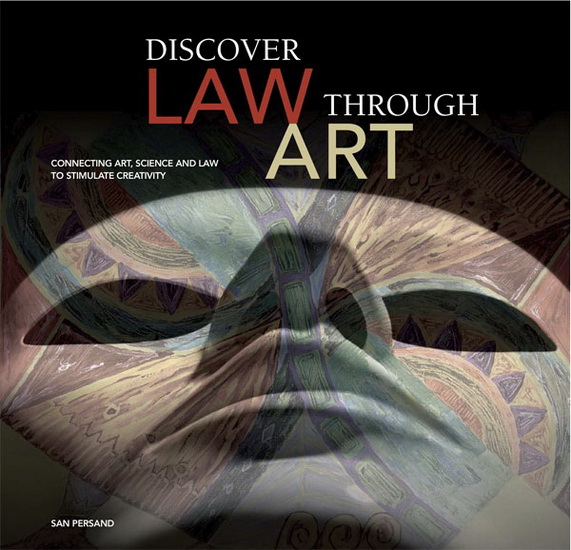
Are you the intellectual or the creative person? Do your school projects involve symbolism, color schemes and artistic vision? Or are you burying yourself in endless piles of academic research, books and drafts of papers not yet published?
Traditionally, you can only define yourself as one or the other, but what would happen if we decided to do both? Better yet, what would happen if we decided to do both at the same time? Discover Law Through Art, a publication that launches at the Montreal Contemporary Art Museum next week, discusses our capacity to use art for interpretation and learning purposes, is, in light of this, a book of the utmost appeal.
San Persand, the book’s author, has a complex profile. A McGill alumnus from the faculty of law, he’s a successful lawyer, an artist and now an author. His coffee table book displays many of his original works of art and attempts to explain the basis of the legal world through the medium of art.
“I’ve always been interested in merging ideas, even when I was studying biology. Throughout my studies, I’ve always been an artist. I was constantly drawing in my notes; you’d find unintelligible scribbles in all of my notes,” said Persand.
The idea for his book stems from dinner parties with friends where he would discuss his view of the artistic world and its link to the legal domain. At his friends’ insistence he finally decided to write a book on the topic, exhibiting some of his artwork while also educating people who had no knowledge of the legal world.
“When I decided, at the time, the coffee table book seemed like a compromise between the artist and the intellectual, a promise about being able to appeal to both. When you think about art books, you think of these larger books with rich, colorful images in them.”
Although it may have been easier to articulate some of his points more extensively through a written work of nonfiction, Persand felt that the concept of intertwining the two worlds of art and law is reinforced by his chosen means of presentation.
The book is formatted so that every page or two is dedicated to displaying a particular painting that then ties into the explanation of a legal concept. For example, one of the paintings depicts a mask divided into two halves, which Persand uses to explain the difference between civic and common law. The book encourages readers to learn extensively about the legal world in a very particular way; playing on symbolism, analogy and comparison. It encourages the left and right hemispheres of the brain to interact and allow people to learn in a totally new way. This touches on the realm of neuroaesthetics, a field which deals with the project of studying art using the methods of neuroscience.
“We need both sides of the brain to think creatively just like we need both feet to walk. It’s important to remember that the brain functions as an entity,” said David Pariser, the chair of the art education faculty at Concordia. “I think everyone has the capacity to be creative. Some people will make great creative discoveries; those are people like Ghandi, Darwin, Einstein, Virginia Woolf and Georgia O’Keefe. But the bottom line is that we all creatively solve problems every day. It’s innate in us,” he said. There is no distinction between artists and intellectuals, said Pariser. Intelligence is manifest in the arts just as in science, politics or religion.
Ultimately, we should consider Persand’s book to be a message to generations of people who are still in the process of finding themselves. Maybe it’s not that we are either intellectuals or artists at heart. Maybe it’s about throwing us off our game and changing the way we see the world.



